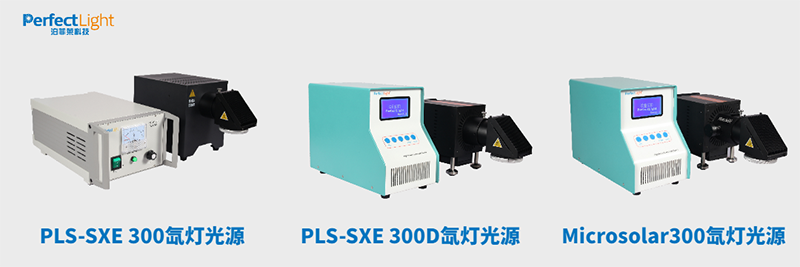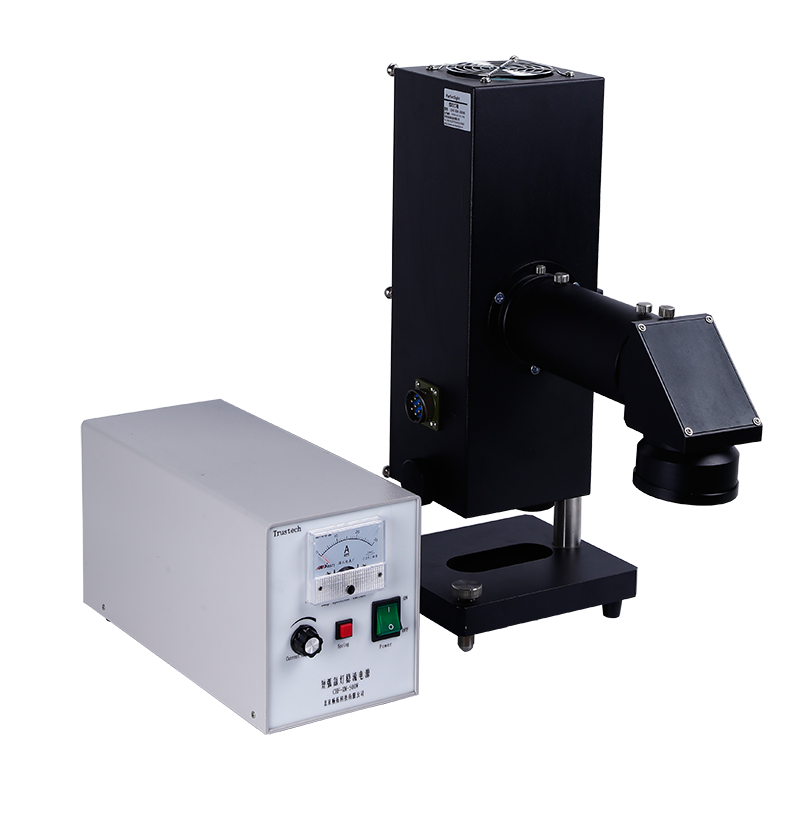Xenon lamp is an electric light source that emits light through the discharge of high-pressure or ultra-high-pressure xenon gas. Its emitted light is a continuous spectrum with energy distribution from 200 nm to 2000 nm, which means the energy output from ultraviolet to infrared light is continuous. Especially in the visible spectrum, the energy distribution characteristics of xenon lamp are extremely similar to the solar spectrum.
Therefore, scholars both domestically and internationally often use xenon lamps as simulated solar light sources. For example, in various photocatalysis experiments such as photocatalytic water splitting for hydrogen/oxygen/complete water decomposition, CO₂ reduction, and photodegradation, xenon lamp sources are frequently used.
Commonly used equipment includes: Perfectlight Technology's PLS-SXE 300, PLS-SXE 300D, and Microsolar 300 Xenon Lamp Source.

Although the ultraviolet component in the xenon lamp spectrum is not as strong as that of the mercury lamp, it does not mean that xenon lamps have no place in experiments that require ultraviolet light. PLS-SXE 300UV, PLS-SXE 300DUV, and Microsolar 300 (UV enhanced) xenon lamp sources can be applied in research focusing on high-energy ultraviolet continuous distribution. For example, simulating the ultraviolet part in sunlight and conducting ultraviolet accelerated experiments. These three devices can address the situation where ultraviolet light experiments overly rely on mercury lamp sources and achieve a light source capable of studying both ultraviolet and visible light. It's worth emphasizing that the ultraviolet-enhanced xenon lamp source has continuous energy distribution in the ultraviolet region, unlike the line spectrum of mercury lamps which only have a few characteristic peaks.▶Click to learn more details about Xenon Lamp
In addition, xenon lamps have strong energy distribution in the near-infrared spectrum (800 nm to 1200 nm), so they can also be used as infrared light sources.
Xenon lamps have the following characteristics:
1. Spectrum Shape Similar to Solar Spectrum
In the spectral graph, you can clearly see the similarity between the solar spectrum and the xenon lamp spectrum. If higher demands are required, xenon lamp sources can be combined with full-reflection filters and AM 1.5G filters to achieve a higher fitting solar spectrum.
2. Continuous Spectrum
Xenon lamp sources provide a continuous spectrum. When a continuous spectrum is needed in the experiment, choosing a xenon lamp is very appropriate. However, xenon lamp sources can achieve narrowband wavelength output through accessories such as filters and monochromators for quantum efficiency measurements. Currently, Perfectlight Technology offers a total of 15 monochromatic optical filters, including commonly used wavelengths in the ultraviolet and visible light regions.

3. Higher Light Power Density
Xenon lamp sources can achieve a light power density of up to 1500 mW/cm² at their light outlet, which is much higher than the light power density of sunlight at 100 mW/cm². Therefore, in photocatalysis experiments, xenon lamp sources can better promote the progress of reactions. With this, the characteristics of xenon lamp sources have been introduced. Next, let's take a look at mercury lamp sources.
Mercury lamp is an electric light source that obtains visible light by generating mercury vapor through mercury discharge. The spectrum of a mercury lamp tends to be in the ultraviolet region. When some catalysts in experiments only respond to ultraviolet light and not to visible light, mercury lamps can be considered as a light source to simulate ultraviolet light. For example, TiO₂ can only be excited to produce electron-hole pairs under ultraviolet light and will exhibit good photocatalytic performance. Recommended equipment: Perfectlight CHF-XM series mercury lamp sources, available in 250 W and 500 W.

Unlike xenon lamps, the light emitted by mercury lamps has characteristic spectral lines, with typical wavelengths such as 254 nm, 313 nm, 550 nm, etc. The output spectrum of a mercury lamp is related to the filling pressure of mercury vapor.
Mercury lamps can be divided into low-pressure mercury lamps, high-pressure mercury lamps, and ultra-high-pressure mercury lamps:
Low-pressure mercury lamps have mercury vapor pressure <1 atm. At this time, mercury atoms mainly radiate ultraviolet light with a wavelength of 253.7 nm.
When high-pressure mercury lamps discharge, the resonance line with a wavelength of 253.7 nm (extraviolet spectrum) is absorbed, and the intensity of visible spectral lines increases. The main radiated visible spectral lines are 404.7 nm, 435.8 nm, 546.1 nm, and 577.0 to 579.0 nm. In addition, it also emits strong long-wavelength ultraviolet light at 365.0 nm.
Ultra-high-pressure mercury lamps work with mercury vapor pressure >1 MPa. This lamp has strong radiation from long-wavelength ultraviolet to visible light, with the main radiated wavelength being 546.1 nm.
That's all for the content about xenon lamp sources and mercury lamp sources. If you have any related questions, you can consult Perfectlight Technology through their official WeChat (Perfectlight2002) or call 400-1161-365 at any time.